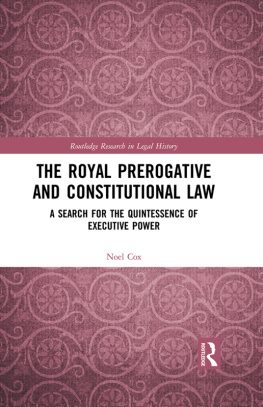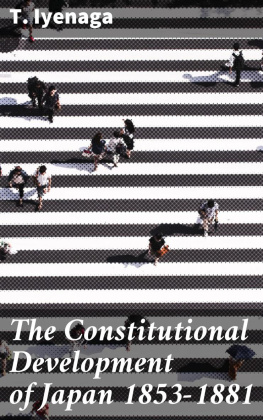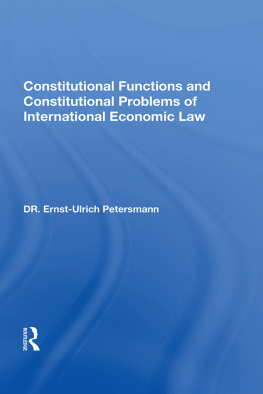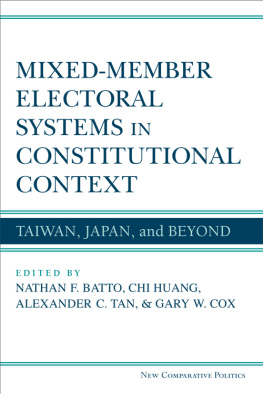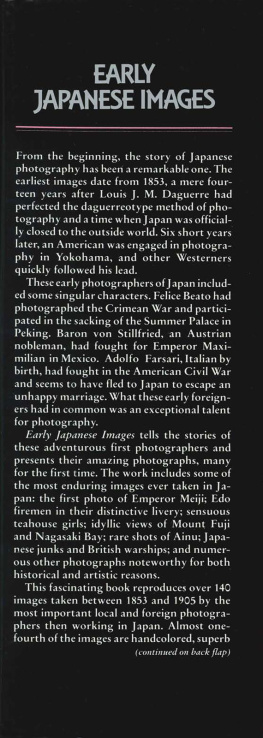CONTENTS.
INTRODUCTORY
CHAP. I. (1853-1868). BEGINNING OF THE CONSTITUTIONAL MOVEMENT
THE CIRCUMSTANCES THAT GAVE RISE TO THE MOVEMENT
THE ACCOUNT OF COMMODORE PERRY'S ARRIVAL BY THE AUTHOR OF GENJE YUME MONOGATARI
DISCUSSION BETWEEN THE PRINCE OF MITO AND THE TOKUGAWA OFFICIALS AT THE COURT OF YEDO
CONCLUSION OF TREATY BETWEEN THE UNITED STATES AND JAPAN
THE OLD PRINCE OF MITO, NARIAKI
II KAMON NO KAMI
BOMBARDMENTS OF KAGOSHIMA AND SHIMONOSHEKI
THE EFFECTS OF THE BOMBARDMENT
1. Showed the Weakness of the Daimios and the Strength of foreigners
2. Showed the Necessity of National Union, and of the Reconstruction of the Administrative Machinery of the Empire
GREAT COUNCILS OF KUGES AND DAIMIOS.
1. Their Nature and Organization
2. How they originated
3. In them lay the Germ of the future Constitutional Parliament of Japan
CHAP. II. (1868-1869). THE RESTORATION
CAUSES OF THE DOWNFALL OF THE SHOGUNATE
1. Revival of Learning
2. Revival of Shintoism
3. Jealousy and Cupidity of the Southern Daimios
THE RESIGNATION OF THE SHOGUN
THE MOTIVE OF HIS RESIGNATION
THE GOVERNMENT OF THE RESTORATION
1. Its Organization
2. Its Departments
FOREIGN POLICY OF THE NEW GOVERNMENT
REMOVAL OF THE CAPITAL TO TOKIO
THE CHARTER OATH OF THE EMPEROR, APRIL 17, 1869
THE KOGISHO
1. Its Origin
2. Its Composition
3. Its Nature
CHAP. III. (1869-1871). THE ABOLITION OF FEUDALISM.
MEMORIAL OF PRESIDENT OF THE KOGISHO
ABOLITION SCHEME OF SCHOLARS IS BACKED BY THE SOUTHERN DAIMIOS
MEMORIAL OF THE SOUTHERN DAIMIOS
IMPERIAL DECREE OF 1871, ABOLISHING FEUDALISM
CAUSES OF THE OVERTHROW OF FEUDALISM
CHAP. IV. INFLUENCES THAT SHAPED THE GROWTH OF THE REPRESENTATIVE IDEA OF GOVERNMENT
JOHN STEWART MILL'S ENUMERATION OF THE SOCIAL CONDITIONS NECESSARY FOR THE SUCCESS OF REPRESENTATIVE GOVERNMENT
JAPAN OF 1871 NOT YET READY FOR THE ADOPTION OF REPRESENTATIVE GOVERNMENT
POLITICAL ACTIVITY OF A NATION NOT ISOLATED FROM OTHER SPHERES OF ITS ACTIVITIES
JAPAN'S POLITICAL DEVELOPMENT GREATLY AIDED BY HER SOCIAL, EDUCATIONAL, INDUSTRIAL AND RELIGIOUS CHANGES
SKETCH OF THE DEVELOPMENT OF THESE NON-POLITICAL INSTITUTIONS FROM 1868 TO 1881
1. Means of Communication
a. Telegraph
b. Postal System
c. Railroad
d. Steamers and the Coasting Trade
2. Educational Institutions
3. Newspapers
CHANGES IN LAW AND RELIGION
CHAP. V. (1871-1881). PROGRESS OF THE CONSTITUTIONAL MOVEMENT FROM THE ABOLITION OF FEUDALISM TO THE PROCLAMATION OF OCTOBER 12, 1881
LEADERS OF THE RESTORATION
EFFECT OF THE OVERTHROW OF FEUDALISM
THE IWAKURA EMBASSY
IWAKURA, ITO, INOUYE
FUKUZAWA
THE PRESS AND ITS INFLUENCES
RI-SHI-SHA AND COUNT ITAGAKI
MEMORIALS OF RI-SHI-SHA TO THE EMPEROR
ESTABLISHMENT OF LOCAL ASSEMBLIES
THE PROCLAMATION OF OCTOBER 12, 1881, TO ESTABLISH A PARLIAMENT IN 1890
INTRODUCTORY.
The power which destroyed Japanese feudalism and changed in that country an absolute into a constitutional monarchy was a resultant of manifold forces. The most apparent of these forces is the foreign influence. Forces less visible but more potent, tending in this direction, are those influences resulting from the growth of commerce and trade, from the diffusion of western science and knowledge among the people, and from the changes in social habits and religious beliefs. The truth of the solidarity of the varied interests of a social organism is nowhere so well exemplified as in the history of modern Japan. Her remarkable political development would have been impossible had there been no corresponding social, educational, religious, economic and industrial changes. In order to trace the constitutional development of New Japan, it is therefore necessary:
1. To ascertain the political condition of the country at and after the advent of foreigners in 1853.
2. To describe the form of government of the Restoration.
3. To examine the state of commerce, industry, education and social life of Japan at each stage of her political transformations.
4. To recount the constitutional changes from the Restoration to the Promulgation of the New Constitution.
As a novice in travel marks the broad outlines, the general features and more important products of the country he visits for the first time, so I shall dwell upon the historic landmarks of Japanese constitutional development. This development no writer, native or foreign, has yet attempted to trace. I shall withstand as much as possible the temptation to refer to the multitude of events which are more or less associated with the constitutional movement. I shall endeavor to ascertain from the edicts, decrees, and proclamations of the Emperor, from the orders and manifestos of the Shogun, from the native authors and journals, from the memorials and correspondence of prominent men, both native and foreign, the trend of our constitutional development. I shall also endeavor to note the leading ideas and principles which, after manifesting themselves in various forms, have at last crystallized into the New Constitution of Japan.
CHAPTER I.
BEGINNING OF THE CONSTITUTIONAL MOVEMENT.
The constitutional movement of Japan began in a spontaneous agitation of the whole body politic when the nation was irritated by the sudden contact with foreigners. The sense of national weakness added a force to this agitation. Had not the foreigners come, the Restoration might have been effected, feudalism might have been abolished, but the new Japanese constitution would hardly have seen the day. Had the government of Japan at the time of the advent of foreigners been in the strong hand of a Taiko or an Iyeyasu, the rulers might have been greatly exercised by the extraordinary event, but public opinion for reform would hardly have been called forth, and the birth of constitutional liberty would long have been delayed. As the vices of King John and the indifference and ignorance of the first two Georges of England begat the strength and hope of the English Parliament, so the public opinion of Japan sprouted out of the ruins of the Shogunate rgime. We must therefore seek for the beginning of the Constitutional Movement of Japan in the peculiar circumstances in which she found herself between 1853 and 1868.
The advent of Commodore Perry in 1853 was to Japan like the intrusion of a foreign queen into a beehive. The country was stirred to its depth. Let us note what a native chronicler says about the condition of Japan at the arrival of Perry:
"It was in the summer of 1853 that an individual named Perry, who called himself the envoy of the United States of America, suddenly arrived at Uraga, in the Province of Sagami, with four ships of war, declaring that he brought a letter from his country to Japan and that he wished to deliver it to the sovereign. The governor of the place, Toda Idzu No Kami, much alarmed by this extraordinary event, hastened to the spot to inform himself of its meaning. The envoy stated, in reply to questions, that he desired to see a chief minister in order to explain the object of his visit and to hand over to him the letter with which he was charged. The governor then despatched a messenger on horseback with all haste to carry this information to the castle of Yedo, where a great scene of confusion ensued on his arrival. Fresh messengers followed, and the Shogun Iyeyoshi, on receiving them, was exceedingly troubled, and summoned all the officials




